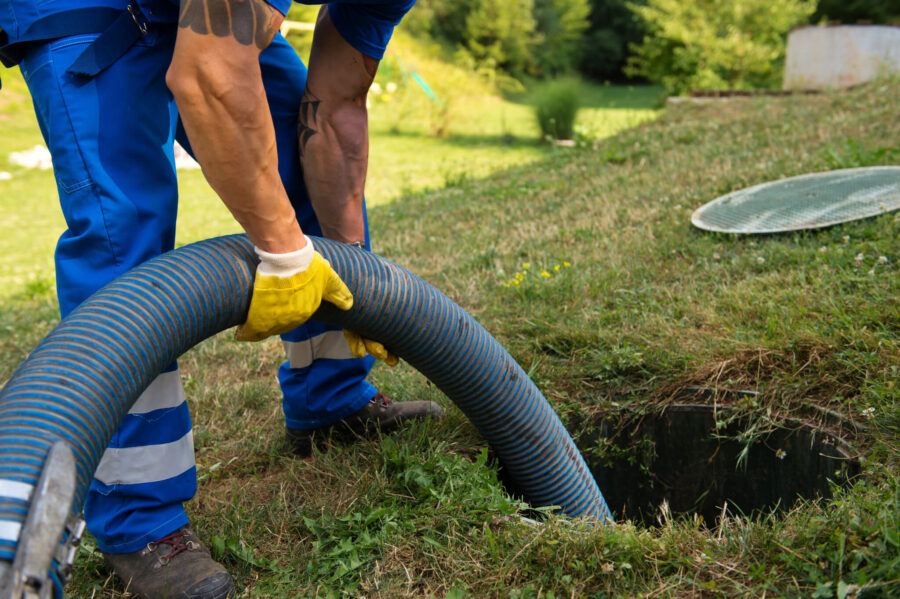Welcome to our comprehensive guide on how to clean a septic filter. Proper maintenance of your septic system is essential to ensure its optimal performance and longevity. One crucial aspect of septic system maintenance is regularly cleaning the septic filter. The septic filter plays a vital role in preventing solid waste and debris from entering the drain field, helping to prevent clogs and potential system failures.
In this article, we will provide you with step-by-step instructions on how to effectively clean your septic filter. We will cover the necessary tools and materials, safety precautions, and practical recommendations to ensure a successful cleaning process. So, let’s dive in and learn how to keep your septic system running smoothly!
| Article Sections | Topics Covered |
|---|---|
| 1. Introduction | Overview of septic filter cleaning |
| 2. Main Text | Step-by-step instructions and safety precautions |
| 3. Conclusion | Importance of regular septic system maintenance |
| 4. Practical Recommendations | Tips for maintaining a healthy septic system |
Before we proceed, it’s important to note that septic system maintenance can be a dirty and potentially hazardous task. If you are uncomfortable or unsure about any aspect of the process, it is highly recommended to seek professional assistance. Safety should always be a top priority when working with septic systems.
Now, let’s move on to the main text where we will provide you with detailed instructions on how to clean your septic filter effectively.

Step-by-Step Guide: Cleaning Your Septic Filter
Keeping your septic filter clean is crucial for maintaining the efficiency and functionality of your septic system. Follow these steps to ensure a thorough cleaning process:
1. Locate the Septic Tank and Access the Filter
The first step is to locate the septic tank on your property. Typically, the tank is buried underground and can be found by looking for a rectangular or circular access cover. Once you’ve found the access point, carefully remove the cover to gain access to the septic tank and filter.
2. Wear Protective Gear
Before proceeding, it is essential to prioritize your safety. Put on protective gear such as gloves, goggles, and a face mask to shield yourself from potential exposure to harmful bacteria and gases.
3. Inspect the Filter
Take a close look at the septic filter to assess its condition. Look for signs of clogging, such as an accumulation of solid waste or debris. If the filter appears heavily clogged or damaged, it may be necessary to replace it entirely. Consult a professional if you are unsure about the condition of the filter.
4. Remove the Filter
Using caution, carefully remove the septic filter from its housing. Depending on the design of your septic system, the filter may be attached to a handle or located within a filter housing. Follow the manufacturer’s instructions or consult a professional if you are unsure about the removal process.
5. Clean the Filter
Once the filter is removed, it’s time to clean it thoroughly. Rinse the filter with a high-pressure hose or soak it in a bucket of water to dislodge any trapped debris. Use a brush or soft cloth to gently scrub away any stubborn residue. Avoid using harsh chemicals or abrasive materials that could damage the filter.
6. Inspect the Filter Housing
While the filter is out, take a moment to inspect the filter housing for any signs of damage or blockages. Clear away any obstructions and ensure that the housing is clean and free from debris. This will help maintain proper water flow and prevent future clogs.
7. Reinstall the Filter
Once the filter and housing are clean and in good condition, carefully reinstall the filter back into its housing. Ensure that it is securely in place to prevent any leaks or bypassing of solids.
8. Replace the Access Cover
After completing the cleaning process, securely replace the access cover to the septic tank. Ensure that it is tightly sealed to prevent any unauthorized access or potential hazards.
Conclusions
Regularly cleaning your septic filter is an essential part of septic system maintenance. By following the steps outlined in this guide, you can effectively clean your septic filter and promote the longevity and efficiency of your septic system. Remember to prioritize safety by wearing protective gear and seeking professional assistance if needed. By taking proactive measures to maintain your septic system, you can avoid costly repairs and ensure the smooth operation of your septic system for years to come.
0 Comments